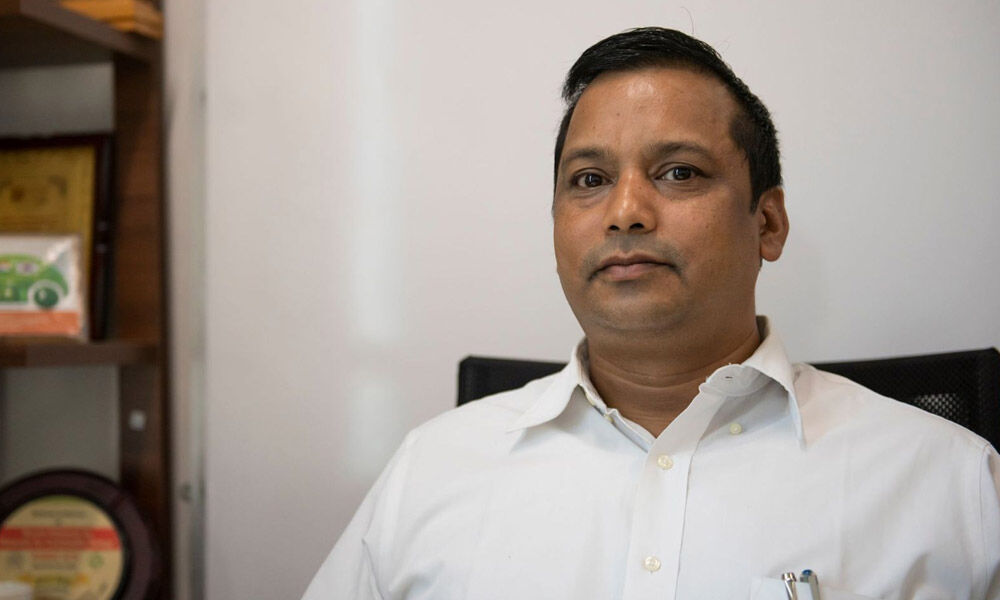Live
- Sensex, Nifty drift lower on profit booking
- Jagan treated cadres as ‘subordinates’, alleges Grandhi
- Mpower’s survey on edu loans
- IIP growth falls to 3.5% in Oct
- Easing food prices lower retail inflation to 5.48% in November
- Space allocation for packaging units at MSME parks on anvil
- Maha Kumbh: Yogi reviews preparations
- Gadkari on accidents: I try to hide my face in meetings abroad
- Abetment of suicide: Mere harassment not sufficient to find accused guilty says SC
- 6.79L homes to receive water under Amrut-II
Just In
IIT Hyderabad finds alternative to Lithium-ion batteries


Dr Surendra Kumar Martha
Rechargeable Lithium-ion batteries (LIBs) are projected to meet future electric mobility, electric aviation, and stationary grid energy storage targets within 2030. However, LIBs need toxic and costly metals like cobalt, nickel, manganese, etc., for functioning
Kandi: The Electrochemical Energy Storage (EES) Lab at IIT-Hyderabad, under the supervision of Dr Surendra Kumar Martha, Associate Professor, Department of Chemistry, has developed a 5V dual carbon battery, utilising self-standing carbon fibre mats as both electrodes (cathode and anode).
This new model sets aside the requirement of toxic, costly, and heavy transitional metals. Energy economy based on renewable sources has been put forward as a way out to shrug off the dependence on fossil fuel.
Rechargeable Lithium-ion batteries (LIBs) are projected to meet future electric mobility, electric aviation, and stationary grid energy storage targets within 2030. However, LIBs need toxic and costly metals like cobalt, nickel, manganese, etc., for functioning. Geologically, unsymmetrical distribution of Lithium and cobalt, along with geopolitics and unethical child labour centered on mining, causes havoc fluctuations in raw material cost. It affects the market price stability of large LIB packs used in electric vehicles.
In the dual-carbon battery, both the electrodes consist of carbonaceous materials, and the ions from the electrolyte intercalate and de-intercalate into the electrode matrix. The novel dual carbon battery consisting of zero transition metal is environmentally benign. It may cut down the overall battery cost by 20-25% and is expected to curb the unpredictability in market price. The use of ubiquitous carbon as electrode active material as well as current collector replacing heavy metals brings in the aspects of lightness and flexibility. The fabricated 5.0 voltage (nominal voltage 4.6 V) cell provides an energy density of 100-watt hour per kilogram approximately and can be extended up to 150-watt hour per kilogram with further modifications.
The research team believes that developed cells may find potential uses in high voltage applications, sophisticated battery-run medical devices, regenerative braking systems in electric vehicles, and stationary grids.
The leader of the investigation team, Dr Surendra Kumar Martha, said, "The study will be extrapolated to push the energy density limits further, and their broad vision includes introducing the dual carbon system as a cheaper LIB alternative to the Indian market."
The research was carried out by Shuvajit Ghosh and Udita Bhattacharjee, PhD students at IIT Hyderabad, under the supervision of Dr Martha, in collaboration with Oak Ridge National Laboratory (USA) and Naval Materials Research Laboratory (Mumbai, India). Naval Research Board (DRDO) supported this project.
The detailed experiments and discussions can be found in the article entitled 'Multifunctional Utilization of Pitch‐Coated Carbon Fibers in Lithium‐Based Rechargeable Batteries - Ghosh, S., Bhattacharjee, U., Patchaiyappan, S., Nanda, J., Dudney, N.J. and Martha, S.K.' published in Advanced Energy Material, 2021, 2100135.

© 2024 Hyderabad Media House Limited/The Hans India. All rights reserved. Powered by hocalwire.com






